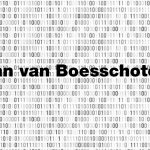France-based holiday firm Eurogroup – known by its Ski France brand in the UK – has gone all-in on software-defined storage from DataCore to try to resolve challenges around business agility.
In the process, it has been able to gain control over a heterogeneous storage landscape – with management from a single console – and cut usage of power and space.
“Our commercial activity is very dynamic,” says Athénaïs Carlon, head of IT at Eurogroup. “As campaigns come and go, we have to create and decommission servers. That means provisioning, then freeing up, hundreds of gigabytes of storage every time.
“The problem is that, over time, we have assembled a very motley collection of disk storage, and that makes our setup very complicated, especially when we suffer an outage, which can take up to two days to identify and fix.”
Based in the Alpine town of Chambéry, Eurogroup offers almost 100 French destinations in holiday homes and hotels. The company also runs a fleet of vehicles for airport and station transfers, as well as restaurant shuttles in the Alps and in London. Its accommodation comprises 22,000 beds and has about 100 salaried staff, with many more working seasonally. Turnover is in the region of €40m.
The challenge: build an unbreakable IT system
Eurogroup’s IT estate comprises 40 virtual servers – 80 including redundant duplicates – on a dozen physical servers, and with almost as many disk shelves.
“All our applications are built for remote use with MPLS network access to the datacentre at Chambéry from all our holiday homes and hotels,” says Carlon. “It’s the classic choice for the tourist trade, where you would never put sensitive customer data in public locations.”
Besides reservation applications, the company’s head office servers manage virtual offices for about 60 partners via Citrix that handle their applications, payment terminals, printing, and so on.
At the outset, three physical servers ran VMware ESXi virtual machines (VMs), with two others forming mirrors for disaster recovery (DR) purposes. A sixth ESXi server is available for test and dev. All these physical machines draw on data via block access on five disk shelves connected via iSCSI (SAN) in some cases and SAS (simple disk shelves) in others.
Also, another cluster of two servers with their own disk shelves share their storage capacity for all applications in NAS mode. The picture is completed by a Veeam backup email server with a shelf of SAS drives.
“It had been six or eight years that we’d had this configuration and it was becoming urgent to rationalise it,” says Carlon. “But when we arrived at that decision in 2019, we didn’t know the pandemic would upset all our activities.
“We had plans to buy new hotels and restaurants and we couldn’t envisage these projects with our feeble tolerance to outages.”
DataCore to integrate HCi and ancient arrays
Carlon put out a call for tenders to three integrators in France’s Savoy region with an idea in mind – that the solution to Eurogroup’s rationalisation challenges lay in hyper-converged infrastructure (HCI).
Hyper-converged integrates servers that run VMs with storage volumes virtualised from local disk, and all managed from a single admin console.
HCI solutions put forward included those from HPE, Dell and DataCore. The last of these was the software-defined storage SANsymphony, which is deployed on a cluster of ESXi servers to create a hyper-converged infrastructure.
“The DataCore product presented an obvious advantage in that it would allow us to take control of all our existing disk arrays,” says Carlon. “In other words, it would allow us to recycle them as required, and as a minimum to use them to build DR storage. Meanwhile, HPE and Dell could only allow management of disk that came with the HCI solution.”
But Carlon was sure of his choice. Over a six-month period, an exhaustive evaluation took place and the results confirmed his hunches.
“SANsymphony carries out synchronisation between servers, which is essential for our DR provision,” he says. “It builds a record of I/O for continuous data protection [CDP] to allow data to be rolled back to a point in time, so before a ransomware attack, for example.”
In fact, data logged by CDP functionality is held on a separate volume, one that is not visible from SANsymphony and so not accessible to ransomware.
“And all SANsymphony functions appear in VMware (vCenter) and Veeam consoles,” says Carlon, adding that the storage of other HCI makers appears in Veeam and VMware consoles, but only in a basic form, as if it was a non-integrated storage array and so not taking control of its high-level functions.
“We can access the SANsymphony command line from vCenter,” says Carlon. “That is to say, we can program all functions without leaving the interface. When we asked HPE why it wasn’t the case with their interface, they told me it was, but by means of a specific extension to their maintenance contract.”
Deployed on standard Dell servers
At the end of the evaluation period, Carlon opted to deploy DataCore on a cluster of two new ESXi servers on Dell R740 hardware with 18 CPU cores, 512GB of RAM and 15TB of capacity.
“They act as a redundant pair,” he says. “In other words, if I have 30TB in total, there is 15TB usable.” At the time of writing, capacity is about 70% utilised. An extra 3TB was added to one of the servers to support the CDP functionality.
Added to this configuration is a third Dell server, an R640, which has no storage and is simply there to run VMs. These three machines are sufficient to run the organisation’s application stack. There is also a fourth server for Veeam backup.
The machines are connected via a new network core built around 10Gbps Cisco MPLS equipment.
Deployment took place at the beginning of the pandemic and migration of systems and network took place in parallel to day-to-day working. “The transition was taken slowly,” says Carlon. “We connected the new servers and the old ones and used VMware’s Data Migration tool to transfer the data in an operation that lasted a month.
“We carried out 90% of the tests, with intentional outages followed by resumption of activity. To be totally honest, the pandemic forced us to reduce our hotel activity and allowed us to move more quickly because we could carry out tests, cut network servers, and so on without risk to our users.”
From the first tests, Carlon realised the benefits of the new setup.
“When we needed to resolve a situation, it wasn’t necessary to find out how to rebuild all the connections and how to reconfigure equipment,” he says. “For example, to restore data for us in an isolated sandbox where we could carry out risk-free tests, it was just a case of a couple of mouse clicks.”
The Eurogroup HQ will also gain from reduced electricity usage. “Previously, our IT system used around 10,000 watts,” says Carlon. “By rationalising storage and virtual machines, we have taken that down to about 3,000 watts.”
Use of space has also been slashed, with two racks of 2.5m reduced to one filled to just one-sixth of its capacity (in 7U). “Cabling is a lot more simple too, because we have gone from six cables per server to only two,” says Carlon.
In addition to redundancy at the core of the HCI, SANsymphony also replicated asynchronously to some older servers for DR purposes.
“Currently, the solution in operation is transitory,” says Carlon. “Our project is to move all our old servers and their arrays to a new IT room that is far enough away from the primary one to avoid risk from an on-site incident.”
Carlon explains that SANsymphony is billed on annual subscription, but in the contract he has succeeded in not being billed for the DR setup.
“In time, we will evaluate the opportunity to replicate to the cloud, so we can deal with physical incidents that overcome both our IT rooms,” says Carlon, who is confident SANsymphony can support such functionality.















